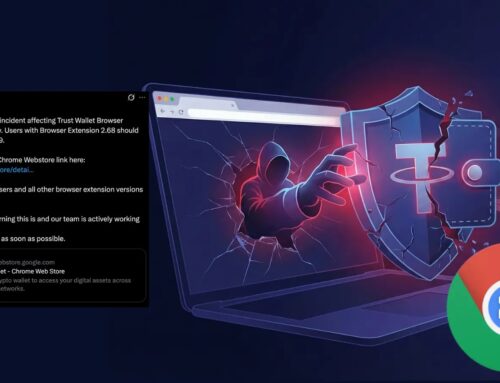
Nmap vs. Wireshark: Choosing the Right Tool for Network Penetration Testing
In the intricate landscape of network security, choosing the right tools is paramount. Security professionals face an increasingly complex threat environment, and the ability to effectively probe, analyze, and understand network behavior can make the critical difference between a robust, secure infrastructure and one vulnerable to compromise. When it comes to network penetration testing, two names consistently rise to the forefront: Nmap and Wireshark. While both are indispensable for network analysis and security assessments, they serve fundamentally distinct purposes in the penetration tester’s arsenal.
Nmap: The Network Mapper and Port Scanner
Nmap, short for “Network Mapper,” is an open-source utility for network discovery and security auditing. It’s a powerful tool primarily used by cybersecurity analysts to uncover hosts and services on a computer network. Think of Nmap as a reconnaissance agent, peering into the network to identify live machines, open ports, and the services running on them. Its capabilities extend to operating system detection, version detection of services, and even vulnerability detection through its scripting engine (NSE).
- Port Scanning: Nmap’s core functionality allows it to scan a target network or host for open ports, revealing which services might be active and potentially exploitable.
- Host Discovery: It can identify live hosts within a given IP range, crucial for mapping out a network’s topology.
- Service Version Detection: Beyond just detecting open ports, Nmap can often determine the exact application and version running on that port, such as “Apache httpd 2.4.41.” This information is vital for identifying known vulnerabilities.
- Operating System Detection: Nmap attempts to identify the operating system of the target host, which can inform further exploitation attempts.
- Nmap Scripting Engine (NSE): This powerful feature allows users to write (or use pre-written) scripts to automate a wide range of scanning and probing tasks, including vulnerability detection, backdoor detection, and more complex service interactions.
For instance, an Nmap scan might reveal an unpatched FTP server (e.g., using an older version of vsftpd) on a specific port, which could then be cross-referenced with public vulnerability databases for known exploits like CVE-2011-2523, a critical backdoor vulnerability in vsftpd versions prior to 2.3.4.
Wireshark: The Network Protocol Analyzer
Wireshark, on the other hand, is a free and open-source packet analyzer. Where Nmap acts as a scout, identifying targets and their characteristics, Wireshark is akin to a vigilant eavesdropper, capturing and analyzing the actual communication flowing across the network. It allows security professionals to inspect individual data packets, providing deep insights into network traffic, protocols, and potential anomalies. Wireshark is invaluable for troubleshooting network issues, developing new protocols, and analyzing network security threats.
- Packet Capture: Wireshark can capture live data packets from a network interface, whether wired or wireless.
- Deep Inspection: It provides granular details of each packet, including header information, payload data, and protocol-specific fields. This depth allows for detailed analysis of network protocols like TCP, UDP, HTTP, DNS, and many others.
- Filtering Capabilities: Powerful filtering options enable users to isolate specific types of traffic, such as HTTP requests, DNS queries, or packets from a particular IP address.
- Protocol Analysis: Wireshark understands hundreds of protocols, dissecting them to present the data in a human-readable format, making it easier to identify unusual behavior or unauthorized communication.
- Traffic Reconstruction: It can reconstruct conversations and data streams, which is crucial for understanding application-level interactions and extracting sensitive information.
A typical scenario where Wireshark shines is in detecting anomalous outbound connections, perhaps indicating malware exfiltration. By filtering for suspicious destination IPs or unusual protocol usage, a security analyst can quickly identify command-and-control (C2) traffic, which might go undetected by Nmap’s more static port scanning approach. Understanding the specific patterns of such traffic can lead to identifying malware families that leverage particular protocols, like DNS tunneling, often associated with threats like CVE-2017-0199 via exploit kits.
Nmap vs. Wireshark: Choosing the Right Tool
The distinction between Nmap and Wireshark is crucial for any network penetration tester or security analyst. They are not competing tools but rather complementary ones, each excelling at different stages and aspects of a security assessment.
| Feature | Nmap (Network Mapper) | Wireshark (Network Protocol Analyzer) |
|---|---|---|
| Primary Function | Network discovery, host/service identification, port scanning, OS detection | Packet capture, deep packet inspection, network traffic analysis |
| Focus | “What’s on the network?” (inventory, active services) | “What’s happening on the network?” (communication patterns, content) |
| Data Source | Actively sends probes to target hosts | Passively captures traffic from a network interface |
| Use Cases | Reconnaissance, vulnerability identification (via NSE), network mapping, asset inventory | Troubleshooting, protocol analysis, intrusion detection, malware analysis, data exfiltration detection |
| Interaction | Active (detectable by IDS/IPS if not used carefully) | Passive (generally undetectable by targets) |
A penetration testing engagement typically begins with Nmap. It helps establish the target’s footprint, revealing open doors and potential weaknesses. Once this initial reconnaissance is complete, Wireshark can be deployed to monitor traffic on specific segments, analyze exploited services, or understand the communication flow of a discovered vulnerability. For example, after identifying an HTTP service via Nmap, Wireshark could be used to intercept and analyze the web traffic, looking for authentication credentials, session hijacking opportunities, or attempts to exploit web vulnerabilities like SQL injection or cross-site scripting (XSS), which might not manifest as distinct port activity but as malicious content within legitimate HTTP streams.
Conclusion
In the realm of network penetration testing, Nmap and Wireshark are distinctly powerful tools serving different yet interconnected roles. Nmap provides the initial landscape view, identifying potential targets and their vulnerabilities, acting as the explorer. Wireshark, on the other hand, delves into the specifics of network communication, acting as the forensic investigator, discerning what is actually transpiring across the wire. Mastering both tools is critical for any cybersecurity professional aiming to conduct thorough network assessments, identify weaknesses, and defend against an ever-evolving array of threats.





